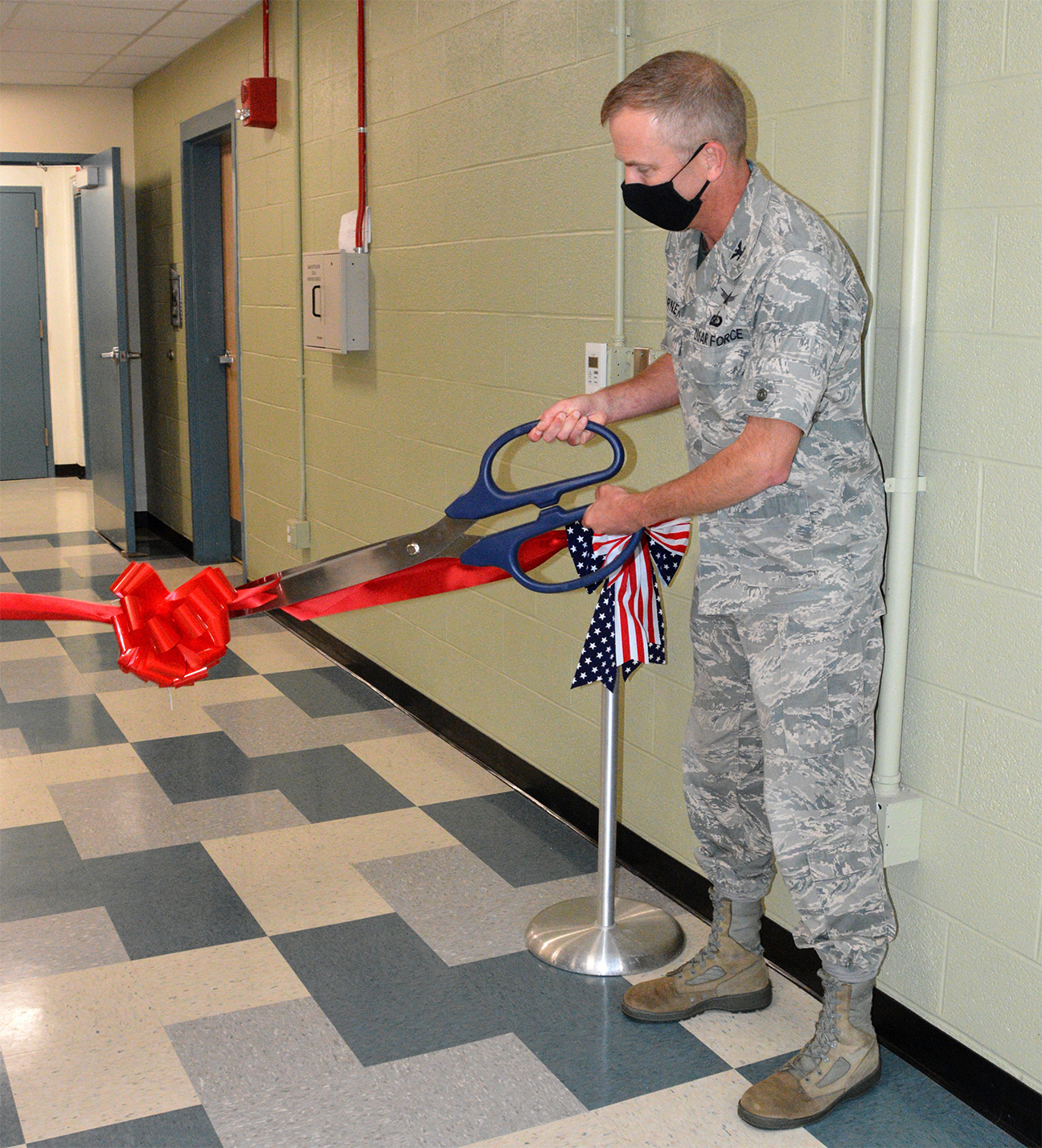AFRL opens newest STAR Lab expansion
WRIGHT-PATTERSON AIR FORCE BASE, Ohio – The Air Force Research Laboratory recently opened its newest expansion of “STAR Lab” at a ribbon cutting ceremony here September 25.
The Special Test and Research Laboratory is a one-of-a-kind facility used for independent analysis, development, testing and processing of materials.
“The new lab will increase AFRL’s research and development capability by providing unbiased, quick reaction expertise to its customers,” said Nader Hendizadeh, Materials Durability and Sustainment Branch Chief. “This new capability will also enhance weapon systems safety, aircraft availability, and help decrease weapon systems sustainment costs.”
AFRL Materials and Manufacturing acting Director Col. Michael Warner and Hendizadeh led the ribbon cutting for STAR Lab that has a primary focus on ensuring increased aircraft availability, decreased life cycle costs, and improved mission capability.
“The investment of a few million dollars in facility upgrades has proven to lead to over a billion dollars in life cycle costs for our platforms,” said Warner. “The RXSS Coatings Technology Team has been intrinsically key in the development of new coatings to protect our Airmen from hazardous material exposure. This new space provides both an increase in capability and a modernization of our facilities to continue to provide quick reaction support and develop new materials to address current needs for chromium and cadmium replacement, as well as technical solutions to maintain our edge against adversaries for both the Air Force and Space Force.” STAR Lab does basic research on materials, as well as working on a wide variety of science and technology solutions in support of Air Force operations and programs. The facility helps to identify and resolve problems, both in existing technologies and in ongoing research and development. It also shares knowledge and lessons learned with the manufacturers who build the aircraft or other equipment, as well as with affiliated contractor companies.
“STAR Lab offers a unique Department of Defense capability with a materials and process focus,” said Dr. David Phillips, the Materials Affordability Tech Base Lead. “It provides unbiased materials and process development and transition, materials testing and evaluation, and rapid response for both root cause and failure analyses.” Key features of STAR Lab are temperature and humidity control throughout and an environmentally controlled paint booth to ensure spray conditions match the operational environment.
The ultimate goal of STAR Lab is to provide a multidisciplinary materials research and analysis capability that will reduce the manufacturing and sustainment costs of Air Force weapons and aircraft. This will in turn reduce the mission readiness burden of materials and material systems in the field of operation.
Part of the new facility, the Coatings, Corrosion, and Erosion Laboratory (CCEL) was also modernized and expanded into an open, continuous floor plan. This wide-open space allowed for precision materials evaluation and characterization in a temperature- and humidity-controlled environment throughout, and created an elastomers testing facility. The lobby and restrooms of the building were also updated.
“With the call to accelerate change or lose, AFRL needs facilities capable of meeting the scientific demands for advancing critical technologies,” said Col. Paul Henderson, AFRL’s Vice Commander. “We know our adversaries are not slowing down, so we must move faster to deliver solutions. The improved STAR Lab and CCEL facility specifically help address our need for rapid technology evaluation, simultaneously delivering technological solutions to current warfighter needs, while enabling revolutionary capabilities for future systems.”
The first STAR Lab started operating in 2009. However, its mission quickly grew, and by 2014 expansion was already needed. The first problem with that was figuring out how to expand the lab into an adjacent, continuous space in a fully occupied building.
The solution required several planned moves of existing laboratory facilities and a building renovation that was divided into three phases. Construction of the expanded STAR Lab began in October 2017.
The expansion enables an increase in unique capabilities and materials characterization, allowing for greater customer engagement and support.

Col. Michael Warner, acting AFRL Materials and Manufacturing Directorate director, cuts a ceremonial ribbon during the grand opening of the new Special Test and Research, or STAR Lab, September 25. Courtesy photo.
